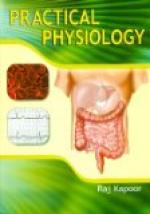It is altogether an error to suppose the use of intoxicants is necessary or even desirable to promote appetite or digestion. In health, good food and a stomach undisturbed by artificial interference furnish all the conditions required. More than these is harmful. If it may sometimes seem as if alcoholic drinks arouse the appetite and invigorate digestion, we must not shut our eyes to the fact that this is only a seeming, and that their continued use will inevitably ruin both. In brief, there is no more sure foe to good appetite and normal digestion than the habitual use of alcoholic liquors.
174. Effect of Alcoholic Drinks upon the Liver. It is to be noted that the circulation of the liver is peculiar; that the capillaries of the hepatic artery unite in the lobule with those of the portal vein, and thus the blood from both sources is combined; and that the portal vein brings to the liver the blood from the stomach, the intestines, and the spleen. From the fact that alcohol absorbed from the stomach enters the portal vein, and is borne directly to the liver, we would expect to find this organ suffering the full effects of its presence. And all the more would this be true, because we have just learned that the liver acts as a sort of filter to strain from the blood its impurities. So the liver is especially liable to diseases produced by alcoholics. Post mortems of those who have died while intoxicated show a larger amount of alcohol in the liver than in any other organ. Next to the stomach the liver is an early and late sufferer, and this is especially the case with hard drinkers, and even more moderate drinkers in hot climates. Yellow fever occurring in inebriates is always fatal.
The effects produced in the liver are not so much functional as organic; that is, not merely a disturbed mode of action, but a destruction of the fabric of the organ itself. From the use of intoxicants, the liver becomes at first irritated, then inflamed, and finally seriously diseased. The fine bands, or septa, which serve as partitions between the hepatic lobules, and so maintain the form and consistency of the organ, are the special subjects of the inflammation. Though the liver is at first enlarged, it soon becomes contracted; the secreting cells are compressed, and are quite unable to perform their proper work, which indeed is a very important one in the round of the digestion of food and the purification of the blood. This contraction of the septa in time gives the whole organ an irregularly puckered appearance, called from this fact a hob-nail liver or, popularly, gin liver. The yellowish discoloration, usually from retained or perverted bile, gives the disease the medical name of cirrhosis.[29] It is usually accompanied with dropsy in the lower extremities, caused by obstruction to the return of the circulation from the parts below the liver. This disease is always fatal.




